
Floppy Eyelid Syndrome
Floppy Eyelid Syndrome and Associated Sleep Apnea
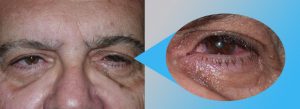
A 60 year old man has symptoms of chronic redness, irritation, and discharge from his left eye. When asked, “Do you snore a lot and mostly sleep on your left side?” he answered, “How did you know that?!”
What is Floppy Eyelid Syndrome?
Floppy eyelid syndrome is a condition characterized by loose, very lax, easily everted upper eyelids.
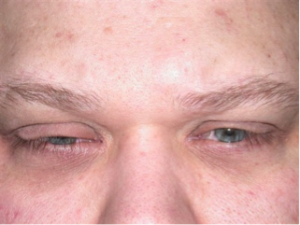
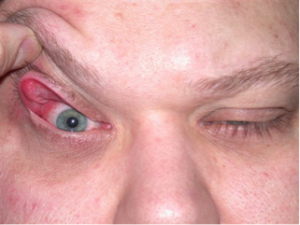
What are the symptoms of Floppy Eyelid Syndrome?
Affected patients typically describe chronic redness, irritation, and discharge from one or both eyes. They also note that the upper eyelid is becoming droopier.
Who gets Floppy Eyelid Syndrome?
Floppy Eyelid Syndrome is almost always associated with obstructive sleep apnea.
What is obstructive sleep apnea?
Obstructive sleep apnea is a condition seen most commonly in young to middle aged overweight males with large chests and necks.
When these patients try to sleep on their backs, their pharynx (throat muscles) collapse while inhaling, producing loud snoring and eventual pauses in respiration (apnea). This causes them to frequently awaken and turn to sleep on their stomach or side. As a result, their face is pressed onto the pillow, mechanically stretching and pulling open the eyelid, leading to chronic eye irritation and drooping of the eyelid(s).

A characteristic sign of floppy eyelid syndrome is ptosis (drooping of the upper eyelid) and eyelash ptosis, in which the eyelashes point downward rather than upward (arrow).
How is Floppy Eyelid Syndrome treated?
Regarding the eyes, patients can use metal shields to cover their eye(s) while sleeping to reduce the mechanical trauma. Medications can be tried to lessen the eye irritation, and there are surgeries which can be performed to tighten the eyelid and/or raise it to correct the drooping. However, unless the underlying obstructive sleep apnea is addressed, the condition will continue.
How does one get checked for obstructive sleep apnea?
Your medical doctor can arrange for a sleep study, in a sleep lab or by a monitor at home. These studies determine if and how often your breathing pauses for a significant period of time while sleeping. Remarkably, people with obstructive sleep apnea may have hundreds of episodes each night in which they stop breathing for 15 seconds or longer.
Why is it important to diagnose and treat obstructive sleep apnea?
Obstructive sleep apnea reduces oxygen flow to all parts of the body. This can lead to high blood pressure, heart failure, arrhythmias, and many other potentially fatal systemic diseases. In addition, the poor quality of sleep has effects on daytime performance at work and other activities. Management of the condition always starts with diet, exercise, and weight loss. Once diagnosed, it can be treated with continuous positive airway (CPAP) masks and/or mouth and nose pieces to prevent collapse of the airway while sleeping. Treated patients sleep more soundly, feel better, and are healthier. Often, once the sleep apnea is treated, the changes seen on the eyelids will slowly revert to normal without the need for surgery.
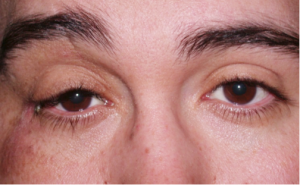
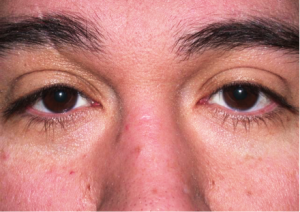
Patient seen before and after treatment of obstructive sleep apnea with CPAP device. Note the improvement in position and appearance of the right upper eyelid.
Take the Sleep Apnea “STOP-BANG” Quiz to see if you are at risk.
Recent Comments